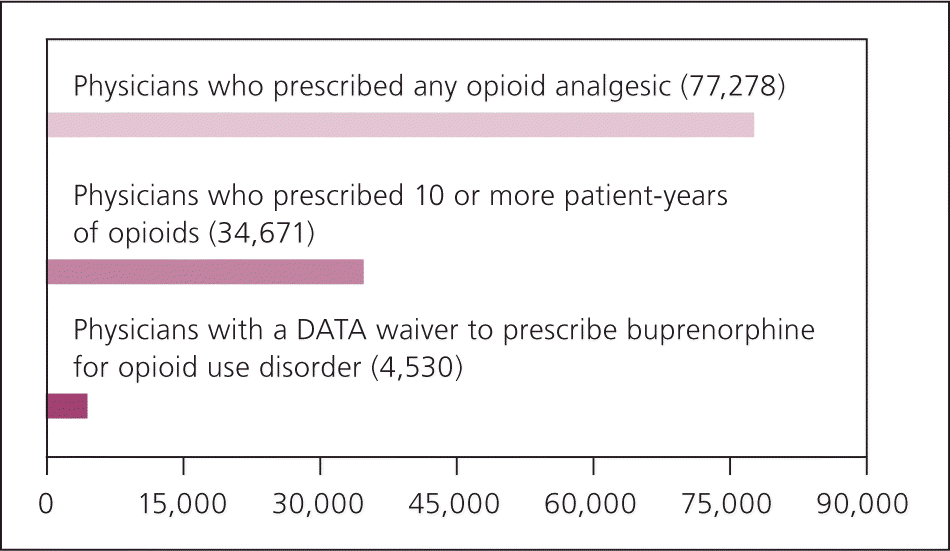
Am Fam Physician. 2016;94(5):350
Author disclosure: No relevant financial affiliations.
Opioid overdose rates have tripled since 2000, and although overprescribing of opioids by physicians is widely accepted as a causal factor, the physician's role in providing medication-assisted treatment for opioid use disorder is less appreciated. Despite a clear willingness to prescribe opioids, few family physicians (FPs) have the necessary certification to treat opioid use disorder with buprenorphine, an effective, evidence-based treatment.
Opioid use disorder is a growing public health concern, with the rate of opioid overdose deaths tripling since 2000 and 28,647 overdose deaths in 2014 alone.1 As a specialty group, FPs prescribe more opioids (by total volume) than any other individual medical specialty.2 Since 2000, FPs have also been able to prescribe buprenorphine, an effective3 and U.S. Food and Drug Administration–approved treatment for opioid use disorder. To provide this treatment, FPs must complete eight hours of training to obtain a Drug Abuse Treatment Act (DATA) waiver, which allows for treatment of up to 275 patients (30 in the first year).
We analyzed recently released 2013 Medicare Part D data and the U.S. Drug Enforcement Administration's DATA waiver roster, and found that 77,278 FPs prescribed opioids to Medicare patients in 2013. Among these, 34,671 (44.9%) prescribed 10 or more patient-years of opioids (enough opioids to supply more than 10 patients for the entire year), and 4,530 (5.9%) were licensed to prescribe buprenorphine to treat opioid use disorder (Figure 1). Therefore, although many FPs prescribe opioids, and a large number prescribe a significant amount, a much smaller number are certified to prescribe a critical treatment for the growing opioid epidemic.

Efforts to improve the appropriateness of opioid prescribing by all physicians are already underway and have received significant attention at the policy level.4 These efforts are a positive step toward improving the primary prevention of opioid use disorder. However, there has not been a similar policy focus on the potential for FPs to provide treatment for the epidemic with buprenorphine. Given the comparability of opioid use disorder to other chronic diseases5 treated by FPs, this represents a missed opportunity. Family medicine leaders and policy makers should consider educational, maintenance of certification, and policy interventions to increase FP engagement in opioid use disorder treatment, and they should adopt policies to encourage interest in treatment within the family medicine community.
The information and opinions contained in research from the Graham Center do not necessarily reflect the views or the policy of the AAFP.
This series is coordinated by Kenny Lin, MD, MPH, Associate Deputy Editor for AFP Online.
A collection of Graham Center Policy One-Pagers published in AFP is available at https://www.aafp.org/afp/graham. Policy One-Pagers are available from the Graham Center at https://www.graham-center.org.
